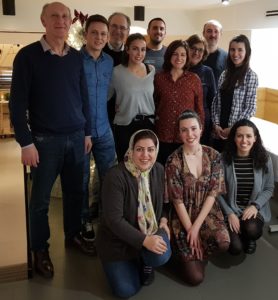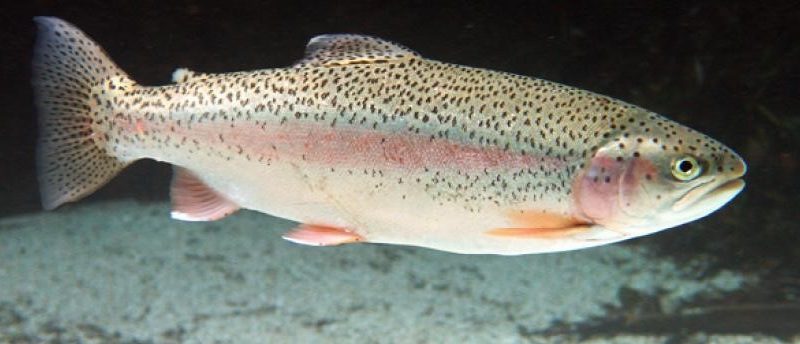The design of more efficient feeding strategies is one of the great challenges that aquaculture faces when it comes to producing fish, a high-quality protein source destined for a human population that continues to grow an, extractive fishing does not give an answer. “The most important cost of fish production is food. Knowing the mechanisms that make a fish eat or not eat will allow the design of more efficient feeding strategies in the medium term, so that the fish eats all the food at the optimal time and conditions for it, so that none is wasted ”, José Luis Soengas, Professor and researcher of the Fish Physiology group of the Marine Research Center (CIM), explains. He with his group partner Jesús Míguez, coordinates the project New perspectives in the regulation of food intake in fish: interactions between homeostatic, circadian and hedonic mechanisms. With a total amount of about 600,000 euros, the project of the State R + D + i Program Oriented to the Challenges of the Society of the Ministry of Science and Innovation. In addition to researchers from UVigo, it has the partification of the group of Fish Neuroendocrinology at the Complutense University, led by María Jesús Delgado and of the Fish Intake Control group of the Torre de la Sal Aquaculture Institute-CSIC with José Miguel Cerdá-Reverter.
There are three basic components in the regulation of food intake in fish: homeostatic regulation, mediated by metabolic and endocrine mechanisms and which explains the mechanisms of hunger and satiety; circadian regulation, which explains why some animals eat during the day and others at night; and hedonic regulation, which is what explains why an animal eats even when it is not hungry. The three subprojects that make up this research address the three basic components in the regulation of intake in a series of joint or separate experimental tasks. “In this new project, using several species of teleost fish as a model, the participants, coordinated by the University of Vigo, intend to go one step further in understanding the processes that regulate food intake, delving not only into the mechanisms homeostatic and circadian mechanisms, studied to date, but also in hedonic or reward mechanisms, which have not been addressed in detail by any research group so far,” Soengas explains. His research group has been collaborating with the other members for 15 years in the project on homeostatic and circadian regulations. Regarding hedonic regulation, the UVigo researcher points out that it is well known that fish can eat when they are not hungry, “so it is assumed that there is this hedonic regulation of intake”, the specific knowledge of this, that is, what components of the food would stimulate it, through what mechanisms, or in what places, etc. ” There is very little knowledge about that.”
Research teams that established the scientific bases of ingestion mechanisms
The three research teams participating in the project New perspectives in the regulation of food intake in fish: interactions between homeostatic, circadian and hedonic mechanisms worked together previously in five coordinated and consecutive projects during the last 15 years, “which it allowed us to establish the scientific bases of the ingestion mechanisms, as evidenced by the large number of JCR articles, approximately 200 in the last 10 years, and above all the quality, most of them Q1, so they are an international reference to respect “, Soengas says , who, in the medium term, expects that the transfer of project results to the productive sector will improve the design of feeding strategies in aquaculture “and, consequently, contribute to strengthening their competitiveness and sustainability.”
In the project, which began in the middle of this year and will last until mid-2023, at the homeostatic level, the objectives that are addressed include, at the gastrointestinal level, to characterize the ability to detect nutrients and their participation through the modulation of the secretion of gastrointestinal hormones in the control of food intake, as well as the impact of the overexpression of the neuropeptide ASIP and the mechanisms of action of serotonin both centrally and peripherally. “The research staff will characterize the regulatory role in food intake and energy expenditure of new peripheral regulatory peptides such as asprosin, adropin and phenixin”, Soengas explains. In the case of peripheral metabolism regulation he explains that it will be studied the effect of central level alterations in AMPK (AMP-activated protein kinase), as well as the role of nocturnine in the liver. At the central level, it will address, firstly, aspects of the nutrient detection mechanisms not studied to date, such as sexual dimorphism or new intracellular mechanisms, and, secondly, the integration mechanisms of nutrients and hormones.
At the circadian level, the objectives set will make it possible to determine the rhythmicity of the melanocortin system, evaluate the capacity of liver clocks for the integration of endocrine and light signals, characterize new clocks at the central level and their relationship with peripheral clocks, determine the role of energy sensors in the functioning of endogenous clocks, the possible role of synchronization of the metabolites of the intestinal microbiota or the ability of the serotonergic system to modulate circadian oscillators. Finally, at the hedonic level, the behavioral tests for their study will be defined, the presence of possible hedonic components in the food and their communication pathways towards the central nervous system will be evaluated and the possible circadian dependence of the hedonic responses and possible mediators of the same will be characterized.

Source: DUVI

